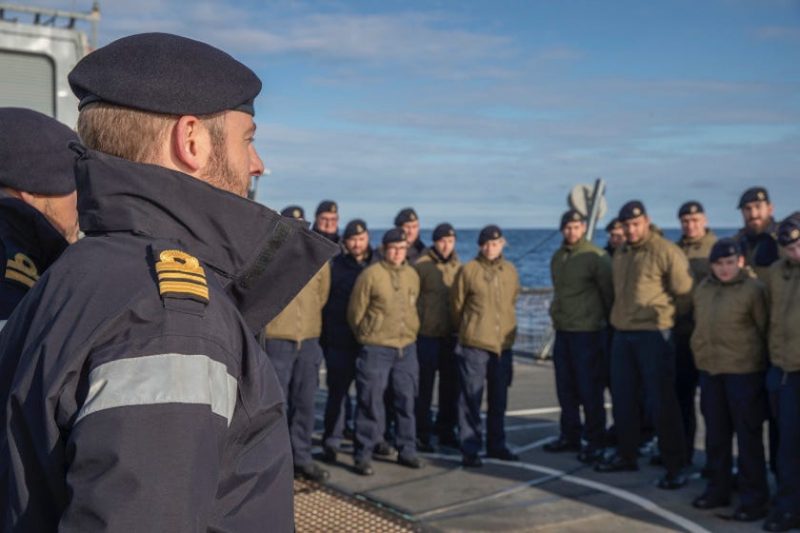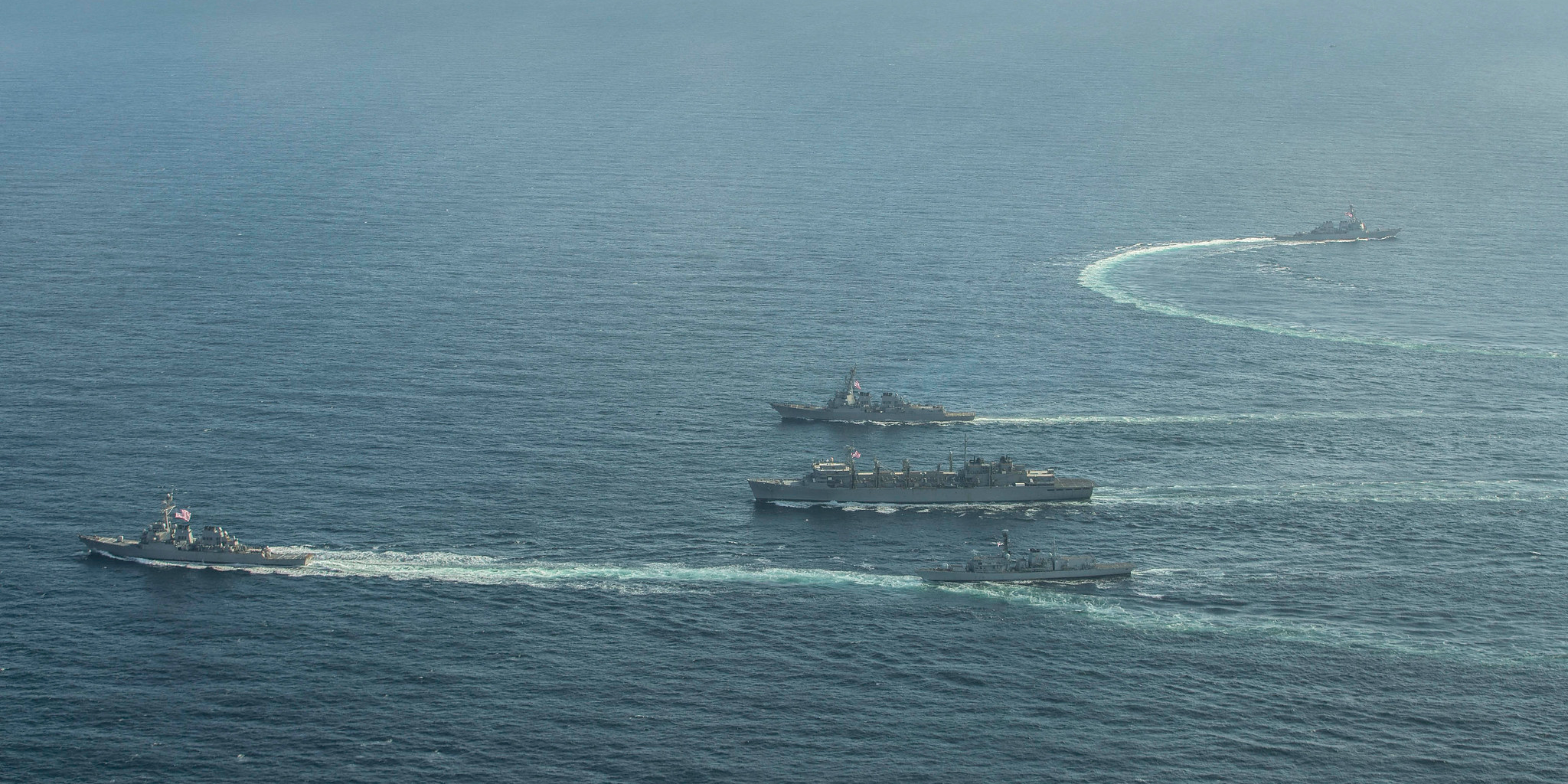- US and British navy ships sailed out of the Barents Sea on Friday, wrapping up several days of exercises in the Arctic, an area of increasing focus for NATO navies.
- Russia’s Northern Fleet has its headquarters and major bases on the Barents Sea, and its ships conducted their own exercises in the sea as the US and British ships finished theirs.
- These photos show the latest in a broader effort by alliance navies to increase their presence in the region and adapt to the harsh conditions there.
- Visit Business Insider’s homepage for more stories.
US Navy ships and a British warship wrapped up seven days of exercises in the Arctic on Friday when they departed the Barents Sea, ending the first trip by US Navy surface ships to that sea since the mid-1980s.
A surface action group of some 1,200 sailors aboard Arleigh Burke-class Aegis guided-missile destroyers USS Donald Cook, USS Porter, USS Roosevelt, combat support ship USNS Supply, and British Royal Navy frigate HMS Kent entered the Barents on May 4 for Arctic training.
The exercises were supported by a US Navy P-8A Poseidon maritime patrol aircraft and a US Air Force RC-135 reconnaissance aircraft.
The Donald Cook, the Porter, the Kent, and the Supply sailed into the Arctic Circle on May 1 and conducted anti-submarine operations in the Norwegian Sea with a US Navy submarine and a P-8A.
Throughout the exercises, the USNS Supply supported the warships with replenishments-at-sea, which allow US and allied ships to remain on station for long periods of time.
These photos show the latest NATO naval venture into the Arctic, which is part of a broader effort by alliance navies to increase their presence in the region and adapt to the harsh conditions there.
The warships sailed into the Barents "to assert freedom of navigation and demonstrate seamless integration among allies," US Naval Forces Europe said on May 4.

"It was great to be operating in the Barents Sea again," Capt. Joseph Gagliano, commander of Destroyer Squadron 60 and of Combined Task Force 65, said in a release. "This is what it means to be a global Navy, sailing wherever international law allows. And it is even better that we returned with the Royal Navy."
While there, the warships worked on "combined and divisional surface warfare tactics, refined coordinated operations with US Air Forces Europe, and reinforced Arctic communications capabilities, while maintaining proficiency in critical warfare areas."

"The Arctic is an important region, and our naval forces operate there, including the Barents Sea, to ensure the security of commerce and demonstrate freedom of navigation in that complex environment," Adm. James Foggo, commander of US Naval Forces Europe and Africa, said in the release.
The Arctic is an area of renewed attention for NATO amid tensions with Russia. The US Navy and its partners have spent more time in the region to gain experience with the challenges it poses to naval operations.

With its presence, the Kent was "practising further integration with our allies and proving her ability to operate at sea in sub-zero temperatures hundreds of miles inside the Arctic Circle," the British navy said.
The sun doesn't set all the way in the Arctic at this time of year, which some sailors said made life a little easier during the exercises.

"Usually, having the midnight watch is tough as you're straining to see contacts and obstructions in the water, but it doesn't get dark here - it just gets dim as the sun dips below the horizon for a few hours, and then it's sunrise again," said Ensign Jeremy Shockley, assistant chief engineer on the USS Roosevelt.
"It has been interesting to work in the Arctic region but also surprisingly normal," Royal Navy Engineering Technician Cameron Warren said. "It has shown me that our training really does prepare us for anything. I have enjoyed the surreal experience of being able to go on the upper deck at any time of day or night as it's always light outside."
The US Navy said it notified Russia's Ministry of Defense about the Barents exercise on May 1 to "avoid misperceptions, reduce risk, and prevent inadvertent escalation."

Source: US Navy
Russia's Northern Fleet, which maintains the country's naval strategic nuclear forces, has its headquarters and numerous bases in the Murmansk region on the Barents.

The Murmansk region borders Norway, a NATO member that has watched Russian military activity in the region warily and called for more support from NATO allies.
The Barents Observer, a Norwegian news outlet based near that border, reported in early May that Russia has made significant investments in military infrastructure in the region, much of it to support the submarine force that Moscow has been rebuilding over the past two decades.
Russia said on May 4 that its Northern Fleet began monitoring the US and British ships. In the days after they entered the Barents, Russia announced its own naval exercises, which appeared to involve live-fire training, in the area.

Russia has the world's longest Arctic coastline and gets roughly one-quarter of its GDP from activity in the region.
Russia's Ministry of Defense said that on the "eve of May 6," three small anti-submarine ships sailed from the city of Polyarny to conduct "planned combat training activities in the Barents Sea."

With minesweepers leading the way, ships from the Northern Fleet's search and strike group began a "test tactical exercise to search for and destroy a mock enemy submarine," with air support from the fleet, including an Il-38 anti-submarine aircraft, the Ministry said.
The Ministry's release, published on May 7, said Russian sailors would also conduct signals training, to work on joint maneuvering of ships, as well as training on damage control for emergency personnel.

"At the final stage of the exercise, which will last several days, anti-submarine sailors of the Northern Fleet plan to perform a number of combat training exercises, including torpedo firing," the release said.
